
The Intelligence and Terrorism Information Center published a comprehensive report providing a response to the Goldstone Report regarding the activities and nature of Hamas and the nature of the terrorist threat from the Gaza Strip. It presents the results of a comparison between the Goldstone Report and the factual findings, and the conclusions drawn from the comparison. You can download the report here.
Response to the Goldstone Report
Hamas and the Terrorist Threat from the Gaza Strip
The Main Findings of the Goldstone Report Versus the Factual Findings
Introduction: main findings
1. This document provides the main findings of a study which examined how the Goldstone Report dealt with the nature and activities of Hamas in the Gaza Strip before and during Operation Cast Lead.
2. The first part of the study examines how the Report relates to the terrorist threat as it developed in the Gaza Strip in the years before Operation Cast Lead. The subsequent parts deal with the various aspects of Hamas’ strategy and combat tactics during the operation, emphasizing the massive use it made of Gazan civilians as human shields. The study does not deal with specific cases of IDF actions, which the IDF has examined separately.
3. The study compares the findings of the Goldstone Report with the actual events on the ground. It is supported by a vast amount of reliable, varied information which originated in the Israeli intelligence community, as well as open-source information, including statements made by Hamas elements.
4. The comparison clearly indicates four basic flaws in the way the Goldstone Report relates to the period before Operation Cast Lead:
- The Report does not deal with the nature of Hamas, particularly its terrorist aspects. It focuses on severe criticism of Israel and presents an openly pro-Palestinian version of the Israeli-Palestinian conflict. It does not deal with Hamas’ ideology, its strategy, the military-terrorist infrastructure it constructed, its radical Islamic nature, the way it relates to the West and the pro-Western Arab regimes, the brutality with which it treats its Palestinian opponents, the direction and aid it receives from its headquarters in Damascus, and its record as the terrorist organization which led suicide bombing terrorism against Israel and fired rockets at its civilians over a period of many years. The Report refers to the de facto Hamas administration as a governmental entity (“the Gaza authorities”), and adopts Hamas’ false claim that there is no connection between that entity and the military-terrorist wing. The facts unequivocally prove that Hamas is one integral system, with a hierarchical leadership which maintains close contact between its political, administrative, security and military-terrorist branches.
- The Report minimizes the extent and gravity of the terrorist activity carried out against Israel from the Gaza Strip and does not assign responsibility for it to Hamas. It focuses on rocket fire during the six months before Operation Cast Lead and devotes very little space to the rocket and mortar shell fire which began in 2001. It also does not deal with the other types of terrorist attacks originating in the Gaza Strip (including mass-murder attacks in Israel and the repeated attacks on the crossings and humanitarian facilities such as the Nahal Oz fuel terminal). The Report does define the rocket fire targeting the Israeli civilian population as a war crime (during the seven years leading up to Operation Cast Lead about 8,000 rocket and mortar shell hits were identified in Israel territory, killing and wounding civilians and severely disrupting daily life). However, the Report does not assign responsibility for the war crime to Hamas or any other terrorist organization operating in the Gaza Strip (such as the Palestinian Islamic Jihad, which operated side by side with Hamas). Thus the war crime has no address (and no person, institution or organization is held accountable for it). Hamas exploited this basic flaw to shirk all responsibility for the rocket fire, using the Report as a tool for its legal and propaganda campaigns against Israel.
- As part of its general trend to minimize the significance of the terrorist threat, the Report does not deal with Hamas’ military buildup in the Gaza Strip during 2007-2008, which threatened Israel (as opposed to its extensive coverage of the historical development of the Israeli-Palestinian conflict). That was in spite of the military buildup which created a significant threat to Israel and was a gross violation of the Oslo accords between the Palestinians and Israel (the Oslo accords allowed the Palestinian Authority to hold weapons only for the purposes of policing and security). It ignores the various components of the process, including the institutionalizing and organizing of the Hamas’ forces into semi-military units (similar to and inspired by Hezbollah); the smuggling into the Gaza Strip of an unprecedented quantity of advanced standard weapons and raw materials for the manufacture of weapons; intensive training in the Gaza Strip, Iran and Syria; and the manufacture of large quantities of rockets and IEDs. It also ignores the extensive efforts made before Operation Cast Lead to prepare residential areas for fighting, part of its combat doctrine of using civilians as human shields. The effort included stockpiling weapons, constructing pits and other facilities for firing rockets, erecting fortifications and digging tunnels, planting IEDs and mines, and booby-trapping buildings.
- The Report completely ignores the massive amounts of aid Iran as well as Hezbollah and Syria (directly or through Hezbollah) gave Hamas to construct its military-terrorist infrastructure. Their support was accelerated during the two years preceding Operation Cast Lead and included smuggling long-range rockets into the Gaza Strip, assistance in developing and transferring knowhow for the self-production of rockets and IEDs, assistance in advanced training for hundreds of terrorist operatives and providing broad financial aid (given to Hamas by Iran). All of the above have continued after Operation Cast Lead and make it possible for Hamas to restore and improve the military capabilities which were damaged. The aid includes long-range rockets from Iran which can reach the center of Israel.
5. These four basic flaws in the Goldstone Report impair the reader’s ability to understand Israel’s reasons for Operation Cast Lead, and bias the description of the developments leading to it.
6. On the other hand, the Goldstone Report accepted the Hamas version of everything regarding the sharp escalation in rocket fire during 2008 which made Israel undertake the operation. For example, it minimizes the meaning of Hamas’ systematic violations of the Egyptian-brokered lull arrangement during the six months preceding the operation. It provides a short, superficial description (with motifs from Hamas propaganda) of the rocket attack Hamas initiated when the lull ended. In addition, it does not assign responsibility for ending the lull to Hamas (despite the fact that Hamas unilaterally announced the lull had ended and accompanied the announcement with an escalation in rocket fire, for which it was severely criticized by Egypt and the Palestinian Authority). All of the above are part of the Goldstone Mission’s underlying bias, which dictated its methodology and whose intention was to make Operation Cast Lead illegitimate in the eyes of the world and to prepare the ground for the serious accusations the Report made against Israel.
7. Throughout Operation Cast Lead itself, Hamas implemented a combat doctrine which made massive use of civilians as human shields. The doctrine, inspired by Hezbollah’s experience in Lebanon, was formulated in the years preceding the operation. The Goldstone Report does not deal with Hamas’ combat doctrine and its implications for asymmetric warfare in urban settings. Asymmetric warfare was characteristic of Operation Cast Lead, and presented the IDF with difficult operational and moral dilemmas (similar to those faced by the Americans, British and others in various combat zones). The report systematically ignores or rejects Israel’s position on the issue of human shields. Rather, it accuses Israel itself of using civilians as human shields, although Israel made every effort to prevent harm from coming to non-combatant civilians.
8. This study documents the various combat tactics used by Hamas and the other terrorist organizations to turn civilians into human shields. Those tactics included forcing residents to stay at home in neighborhoods where the IDF operated; assimilating terrorist operatives into civilian neighborhoods; exchanging their uniforms for civilian clothing while fighting the IDF; surrounding operatives with children to facilitate their escape from combat zones; making large-scale military use of civilian houses, which included constructing tunnels for assault and escape; situating its military infrastructure within civilian houses and public institutions; turning residential neighborhoods into combat zones (operational plans for which were seized by the IDF during the operation); firing rockets and mortar shells from within civilian population centers, including from next to buildings and from roofs; and summoning civilians to come to operatives’ houses to serve as human shields for terrorist operatives in danger of being attacked by the IDF
9. As part of implementing this doctrine, extensive use was made of public and administrative institutions on the assumption that it would increase Hamas operatives’ chances of survival and make it difficult for the IDF to operate. This study documents the wide-spread, formal military use made of mosques, hospitals and educational institutions as locations for storing weapons, deploying terrorist operatives, fighting and firing rockets.
10. The study presents, among other findings, many specific examples, such as weapons hidden under a pulpit in a mosque in the Al-Atatra neighborhood of the northern Gaza Strip, the extensive military use of the Shifa’a hospital (the largest in the Gaza Strip) and others, the extensive use of ambulances to transport terrorist operatives during the fighting, booby-trapping a school in the Zeitoun neighborhood in Gaza City, and turning the laboratories of the science department of the Islamic University in Gaza City into production lines for rockets and other weapons. The Goldstone Report, on the other hand, either ignores the information about Hamas’ combat tactics or minimizes its extent and importance.
11. The study examined the evidence regarding the degree to which Hamas’ internal security services were involved in military-terrorist activities, both routinely and during Operation Cast Lead. The Goldstone Mission accepted Hamas’ claim that the police and other internal security services are civilian entities whose only duty is enforcing law and order. The Report is therefore extremely critical of Israel for having attacked Hamas police and internal security service targets, representing them as attacks on civilians. Hard Israeli intelligence information as well as public declarations made by senior Hamas figures and open-source information demonstrate the nature of the involvement of the internal security services in Hamas’ military activities. That involvement is expressed at three levels:
- The senior governmental level: The support of the interior ministry of the de facto Hamas administration for Hamas’ Izz al-Din al-Qassam Brigades and other terrorist organizations. Speaking in Arabic (not what they told members of the Goldstone Mission), senior members of the Hamas administration repeatedly praised the cooperation between the interior ministry, the internal security services and the various terrorist organizations (which they refer to as “the resistance”). For example, Fathi Hamad, interior and internal security minister, boasted that his ministry made every effort to protect the various organizations and to “facilitate their jihadist missions.” To that end, he said, he and the members of his ministry met with the commanders of the organizations on a routine basis to remove obstacles which might hinder their military-terrorist activity. On another occasion, he praised his predecessor Sayid Siyyam, saying that one of his main achievements was the creation of the “cooperation and coordination between the security services and the Palestinian resistance.”
- Formal cooperation between the police and other internal security services, and Izz al-Din al-Qassam Brigades: Intelligence information indicates that for years there was formal cooperation between the police and internal security services, and the Izz al-Din al-Qassam Brigades. It included joint deployment at bases and headquarters, joint training exercises at Izz al-Din al-Qassam Brigades facilities (a Hamas video clip shows Izz al-Din al-Qassam Brigades operatives training with police vehicles), conducting ambushes and observations, the transfer of weapons from the Brigades to policemen and joint preparations for a scenario for fighting the IDF. In such a scenario, police and other security services would join the fighting at the expense of their internal security duties. That cooperation has continued after Operation Cast Lead. For example, on December 20, 2009, the Brigades held a large military exercise in the northern Gaza Strip. It was intended to simulate fighting against the IDF in a scenario of a military operation in the Gaza Strip. The Hamas internal security services played a central role in the exercise, closely cooperating with the Brigades.
- Fighting under the command of the Izz al-Din al-Qassam Brigades: Police and other security service operatives were integrated into the Izz al-Din al-Qassam Brigades. According to large amounts of reliable intelligence, police and other internal security service operatives served extensively, both routinely and in emergency situations, in the Brigades (including during Operation Cast Lead). In the scenario of a broad-scale Israeli incursion into the Gaza Strip, operatives of the internal security services become an integral part of Hamas’ military structure (whether by having individual operatives join the organic forces of the Brigades, or whether by having the security services fight side by side with them).
12. During and after Operation Cast Lead police and other security service operatives with double identities were killed. Hamas made an effort to hide the names and identities of operatives killed during the fighting. However, even during the Operation, and more so after it, its efforts were gradually overcome and posters commemorating those killed were issued. Some of them clearly indicated the double identity of the police killed showing them wearing both Izz al-Din al-Qassam Brigades and police uniforms and filling roles in both entities. The posters used terminology characteristic of the Brigades. Additional information shows that internally, as opposed to what is reported in the Goldstone Report, Hamas makes no distinction between Brigades and internal security services operatives, regarding all those killed during Operation Cast Lead as fighters.
13. The statistics of Palestinian casualties during Operation Cast Lead, as they appear in the Goldstone Report, were also examined by the Israeli defense establishment. According to a thorough examination, during Operation Cast Lead 1,166 Palestinians were killed, of whom 709 were operatives in Hamas’ military and security system. At least 60% of the casualties were terrorist operatives actively engaged in the fighting.
14. The Goldstone Mission, on the other hand, accepted the data provided by the human rights organizations in the Gaza Strip, most of which match the false Hamas database and Hamas’ Tawthiq (“documentation”) Committee, which is the creation of the de facto Hamas administration’s justice ministry. (Today Tawthiq exploits the Goldstone Report to wage a legal campaign against Israel in Europe.) According to the data issued in the Report, the total number of Palestinians killed was more than 1,444, of whom some 20% were “combatants.” One reason for the discrepancy between the data is the false representation of police and internal security casualties as ordinary civilians, used to magnify the claims against Israel and reinforce the thesis that it deliberately targeted civilians.
15. The percentage of operatives killed (at least 60%), compared with the number of non-combatants killed, is relatively high, particularly since the fighting took place in a densely-populated civilian area. In that area, Hamas made extensive use of non-combatant civilians as human shields. The Report does not relate to the special challenges of asymmetric warfare against terrorists using civilians as human shields and ignored the tragedy of civilian losses exploited for propaganda purposes. It does not make an effort to compare the way the IDF fought in the Gaza Strip with similar military campaigns fought by national armies against terrorist organizations and radical Islamic elements in other arenas (Iraq, Chechnya and Afghanistan).
16. The main conclusion of this study is that there is an enormous discrepancy between the findings of the Goldstone Report and the factual findings, and an extreme imbalance tipped against Israel in favor of Hamas. The Report systematically relies on selective, biased information, in many cases supplied by Hamas or by individuals and/or institutions controlled by it. The Report analyzes the selective, biased information in a way clearly intended to reinforce the thesis that Israel deliberately targeted civilians (a thesis which supports Hamas propaganda). We, the researchers and authors of this study, are aware that some of the information we had access to was not available to the Goldstone Mission. However, it is also clear that the authors of the Goldstone Report consistently avoided using information which was, in fact, accessible, but which did not support its main thesis, or at least presented serious doubts regarding its validity.
17. The Goldstone Report either ignores or minimizes the serious nature of the terrorist threat from the Gaza Strip facing Israel during the period before Operation Cast Lead (the potential for which still exists). The Report also systematically does not relate to the nature of Hamas or its goals. It also assigns no responsibility to it or any other terrorist organization for the years of rocket fire targeting Israeli civilians. It also does not blame Hamas for its use of Palestinian civilians as human shields. As far as Hamas is concerned, it is absolved by the Goldstone Report of all responsibility for war crimes carried out before and during Operation Cast Lead. Therefore, since the publication of the Report, Hamas has tried to use it wherever possible against Israel and sometimes even against the Palestinian Authority.
Sources
18. This study is based on a vast amount of intelligence information from the Israeli intelligence community which was made accessible to the team of researchers. It also made extensive use of Palestinian, Arab and international media, and of previous bulletins issued by the Intelligence and Terrorism Information Center (which were used selectively by the Goldstone Mission). In addition, the intelligence information was supported and complemented by statements and investigations of IDF forces who fought on the ground.
19. This study employed the following concrete sources of information:
- Vast amounts of intelligence information, based, among other things, on human sources (HUMINT) and intelligence sources, including the tactical communications networks of the terrorist organizations.
- Interrogations of terrorist operatives belonging to Hamas and the other terrorist organizations who were detained during Operation Cast Lead.
- Video clips photographed by the Israeli Air Force during the operation.
- Analysis of aerial photographs of terrorist targets (bases, headquarters, facilities, weapons) and of residential neighborhoods in the Gaza Strip in which the military-terrorist infrastructure was based.
- Documents seized during Operation Cast Lead (including two operational sketches of residential neighborhoods in the northern Gaza Strip which were prepared as combat zones).
- Video clips and information from the Hamas media (including interviews held by Western correspondents with local residents).
- Photographs taken by IDF forces operating in the Gaza Strip.
- Statements made by IDF officers who participated in the fighting.
Methodology
20. The study was written by a team of researchers at the Intelligence and Terrorism Information Center (ITIC) at the Israel Intelligence Heritage & Commemoration Center, headed by Dr. Reuven Erlich (Lt. Col., Ret.), with the assistance of the Israeli defense establishment. The ITIC dealt extensively with some of the issues appearing in the study in the years preceding Operation Cast Lead.
21. This study provides a response to the Goldstone Report regarding the activities and nature of Hamas and the nature of the terrorist threat from the Gaza Strip. However, it does not deal with other military and political aspects of Operation Cast Lead and its results, nor does it compare the operation with other arenas in which asymmetric warfare has been waged.
22. The methodology of the study is a comparison of the Goldstone Report and the facts on the ground, as they were reflected by the evidence relating to the actions of Hamas and the other terrorist organizations before and during Operation Cast Lead. Key issues were examined and a comparison was made between what the Report said and the factual findings.
The Methodology of the Goldstone Report
23. During its research, the team was exposed to the Goldstone Mission’s way of thinking and drawing conclusions. The most conspicuous methodological flaws, which appear throughout its 452 pages, are its complete lack of balance, and its clear, systematic pro-Palestinian bias, exemplified by its adoption of the Hamas narrative and reflecting its initial prejudice against Israeli.
24. In any research work, regardless of its professional level, there is a certain amount of subjectivity and a potential for bias, even subconsciously, but the Goldstone Report is an extreme case. It is doubtful whether the way the Goldstone Report used information regarding Hamas and terrorism can be understood as anything other than a conscious attempt to serve a central, premeditated thesis. The main thrust of the thesis is to accuse Israel of war crimes against Palestinian civilians.
25. As a result of its fundamental bias, the Goldstone Report is tainted by a variety of flaws which are evident throughout: its complete asymmetry in collecting statements, which led it to rely to a great extent on biased and unreliable information supplied by Hamas or by Hamas-controlled sources which were neither independent nor objective; its systematic rejection or minimizing of the significance of available Israeli information and information from other Western sources; its failure to analyze essential facts and events; and its passive approach to collecting the data related to core issues which might have balanced the picture relating to Israel.
26. To the above can be added its complete acceptance of the Palestinian narrative (particularly Hamas’) and as a result its complete disregard for Israel’s positions, considerations and worldview. It lacks an attempt to put Operation Cast Lead into a wider perspective, such as an analysis of the problematic nature of waging asymmetric warfare as related to the massive use Hamas made of civilians as human shields, or a comparison of the results of the fighting in the Gaza Strip with fighting in other areas where national armies combat terrorist and guerilla organizations operating from within civilian populations.
The Structure of the Study
27. The study is divided into four parts, each of which deals with the various aspects of Hamas’ activities and the terrorist threat from the Gaza Strip:
- Part One deals with the period preceding Operation Cast Lead;
- Part Two deals with Hamas’ use of Gazan civilians as human shields;
- Part Three examines the integration of the police and Hamas’ other internal security services into the Izz al-Din al-Qassam Brigades in military-terrorist activities;
- Part Four includes two appendices. The first deals with data related the number of Palestinian casualties and the second contains publications issued by the Intelligence and Terrorism Information Center dealing with key issues dealt with by the Goldstone Report.
Each of the first three parts begins by presenting the results of a comparison between the Goldstone Report and the factual findings, and the conclusions drawn from the comparison.
Download the report here.



 RSS
RSS

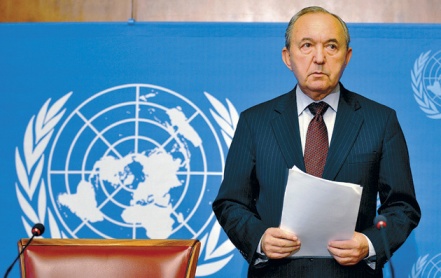

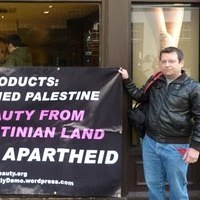
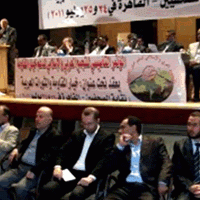

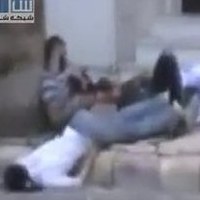
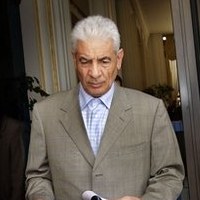




Hamas and the Terrorist Threat from the Gaza Strip – response to the Goldstone Report #israel #hamas #gaza #goldstone http://j.mp/bEp9fu
RT @CrethiPlethi: Hamas and the Terrorist Threat from the Gaza Strip – response to the Goldstone Report #israel #hamas #gaza #goldstone http://j.mp/bEp9fu
RT @CrethiPlethi: Hamas and the Terrorist Threat from the Gaza Strip – response to the Goldstone Report #israel #hamas #gaza #goldstone http://j.mp/bEp9fu
[…] See the original post here: Hamas and the Terrorist Threat from the Gaza Strip | Middle East … […]
[…] Hamas and the Terrorist Threat from the Gaza Strip | Middle East Affairs Information Center | Analys… […]
[…] Hamas and the Terrorist Threat from the Gaza Strip | Middle East … […]